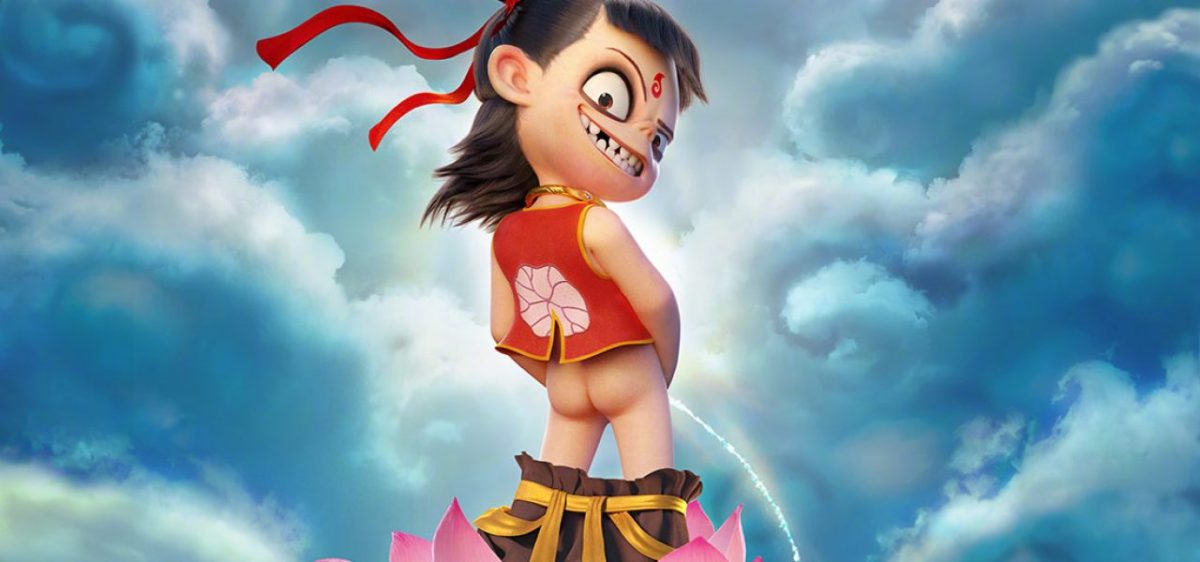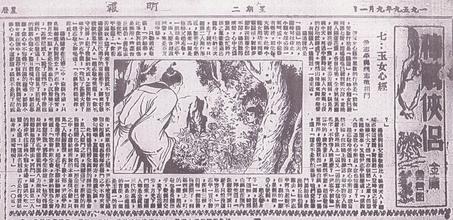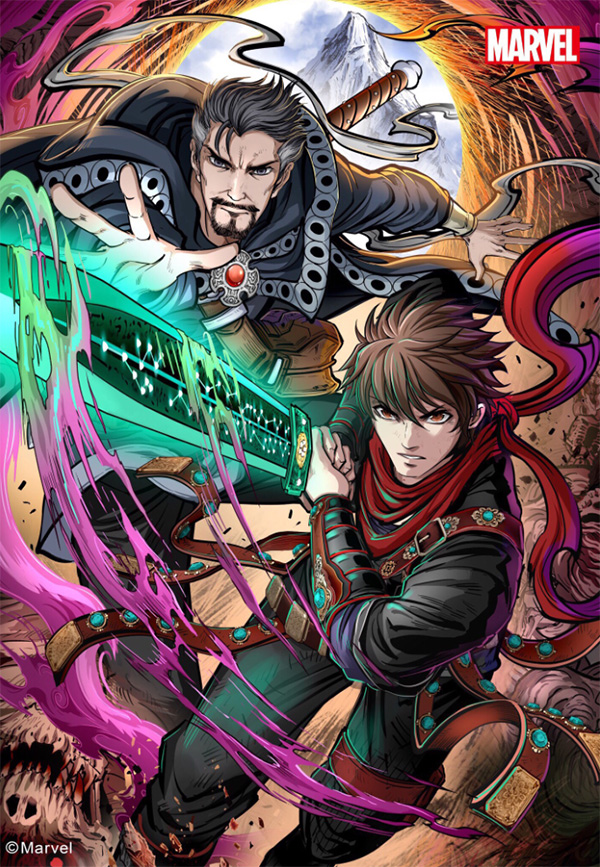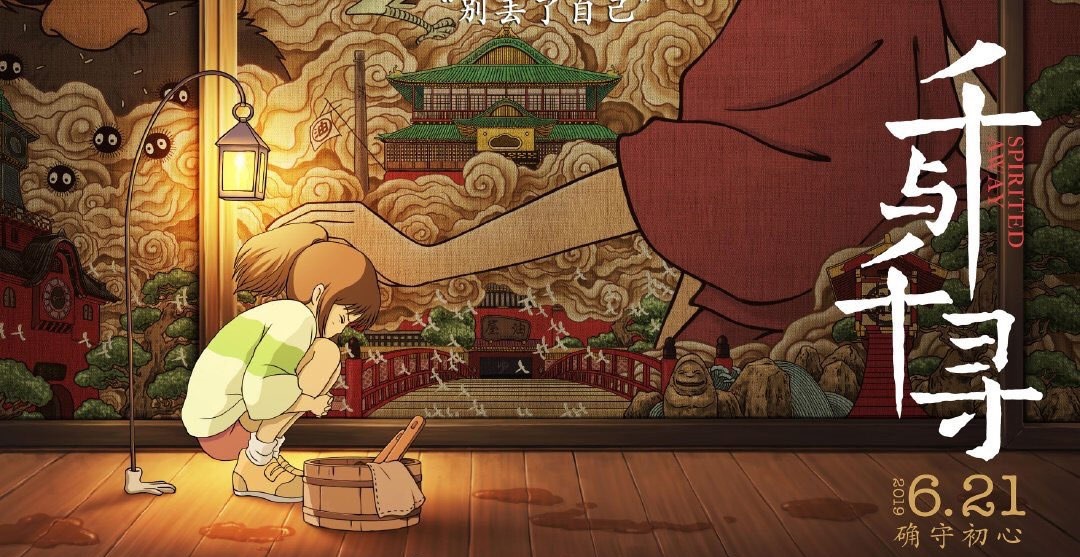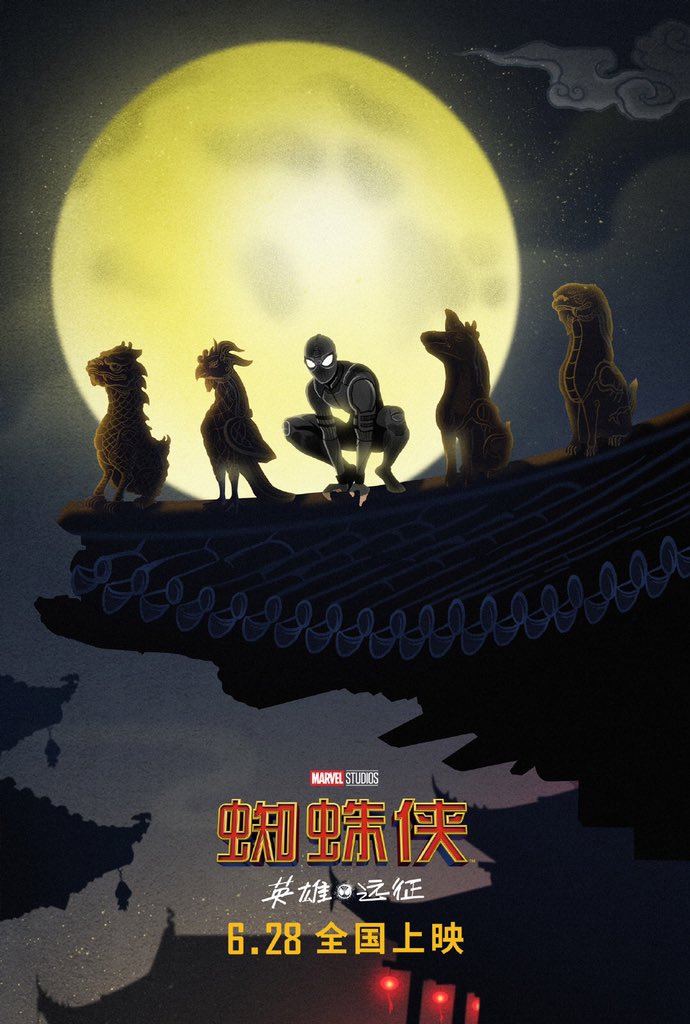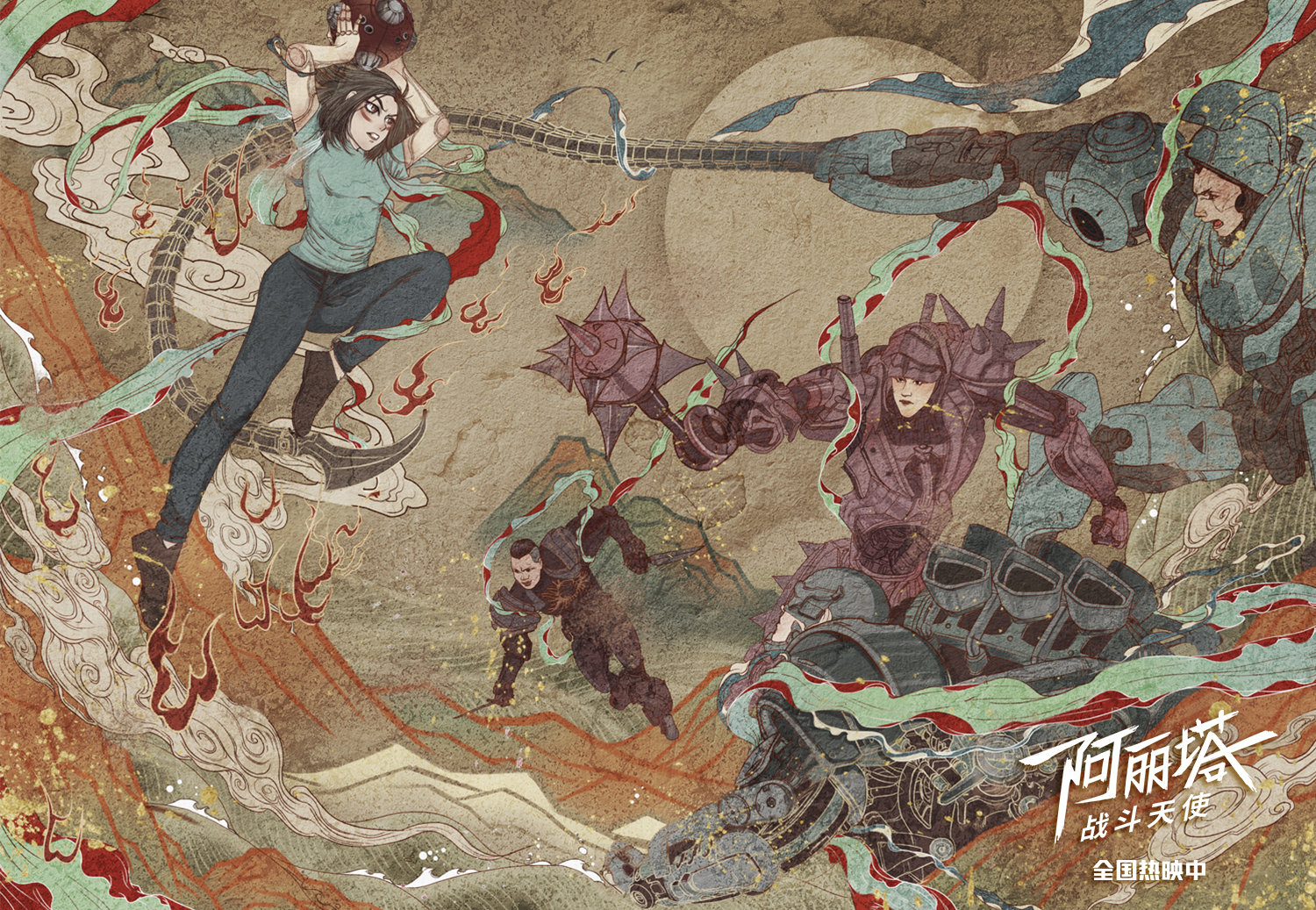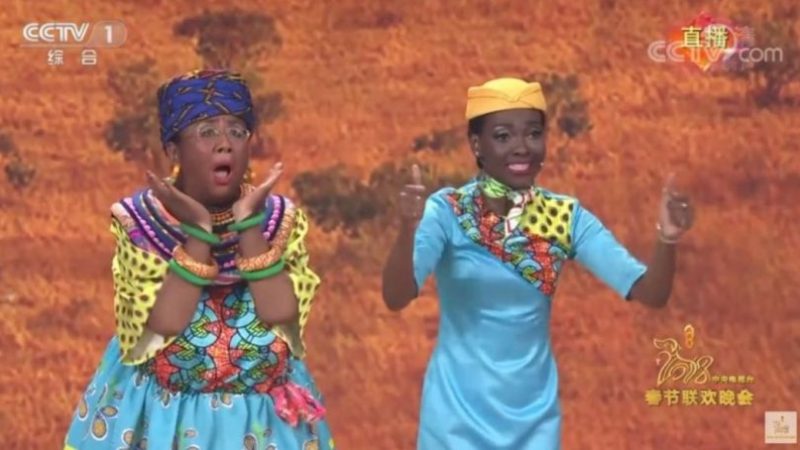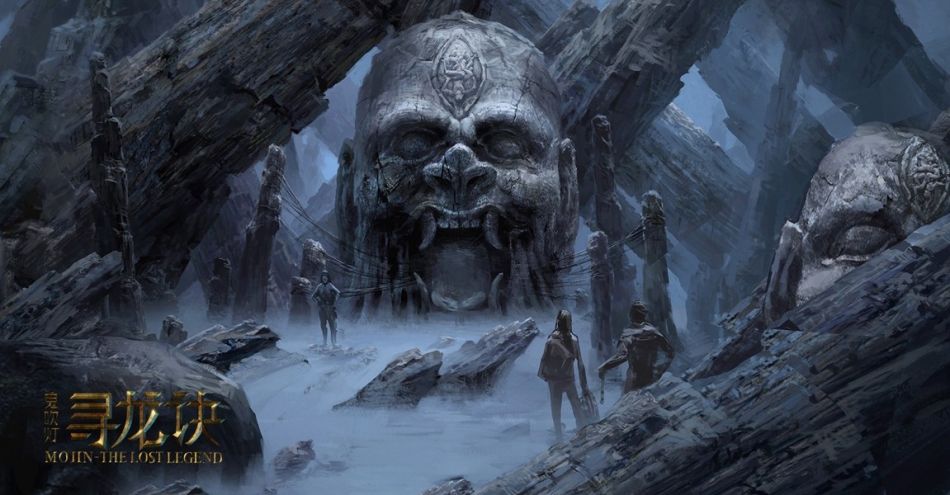NetEase Comics in association with Marvel Comics released two digital comics in Mainland China one year ago; Sword Master and Aero. In July of 2019 both of these comics became available here in the United States.
One of these comics, Sword Master, has deeper Chinese cultural influences in its storylines than the other. That if the average American reader knew about, they would appreciate the new Chinese superhero even more.
So, let us dive into the world and culture of the Middle Kingdom and explore: Sword Master Explained!

By Ryan Carroll, Editor-at-Large
Sept. 2019
Joining the 616
Sword Master and Aero officially made their Marvel Comics debut (joining the Official 616 Canon) in June during a limited four issue run of New Agents of Atlas. That continued in August with issue #1 of Agents of Atlas.
We covered their debut in a recent article which examined why Marvel Entertainment has brought over their Chinese Superheroes to the United States, to the 616 Canon. Subsequently, releasing their first issues translated from Chinese just days before the San Diego Comic Con announcement of the Shang-Chi and the Legend of the Ten Rings Phase 4 MCU film.
Their American English language release also happened two months after NetEase and Marvel Entertainment extended their partnership agreement in China, from just the digital comics of Sword Master and Aero. To producing games, comics, and “television” products of Marvel properties for China and beyond.
A deal that happened just before Beijing Regulators would allow foreign entities to invest into Chinese streaming services.
Leading us to look at (in the linked article above) if Marvel and NetEase are planning Sword Master and Aero streaming series for China, that may end up on Disney+. Connecting them in an ancillary fashion to the MCU?
Out of either of these two new-ish properties, Sword Master is prime for a big budget (even big for China) adaptation for a streaming series as it contains several Chinese elements that would appeal to the Chinese streaming (and movie-going) audience.
Who is Sword Master and why may he be the more important of the two Chinese superheroes developed by Marvel and NetEase? What is it about this character that American comic readers may be missing out that if they knew they may better appreciate their comic reading experience?
Sword of Goujian
The Sword of Goujian is a 2000+ year-old artifact from the Spring & Autumn period of Chinese Ancient history that was rediscovered in Hubei Province in 1965, at an archaeological tomb dig site.
Sheathed in an air-tight scabbard of wooden black lacquer, the tin-bronze Jian sword (the “gentleman’s sword of Ancient China) had its blade’s edge and its ornate decoration preserved, as if it had just been forged yesterday.

The mystery (mysticism?) was, how could the Sword of Goujian be in such rare pristine condition when it was discovered, after being completely submerged in underground water for over 2000 years?
A sword truly made for a king – which is was, in fact, the King of Goujian.
In the comic Sword Master‘s (Lin Lie) father discovers a rare sword at an archaeological dig called the “Sword of Fuxi” (more on that in the next section), and upon his mysterious disappearance the only thing his father has sent to Lin Lie was this sword.
A sword that bears striking resemblance to the Sword of Goujian, which to Chinese readers would hold a subconscious semblance as the Sword of Goujian is considered to be such a rare and historically important artifact. That it is prohibited from leaving the country, after a 7-millimeter crack occurred while on exhibition in Singapore.
The Sword of Goujian is now on the official List of Chinese Cultural Relics Forbidden to be Exhibited Abroad.

Warriors of Three Sovereigns
Sword Master is not the title of the comic in China, but only the name of the superhero character of Lin Lei. The title of the series is The Warriors of the Three Sovereigns as Lin Lei is a direct descendant of the first of the Three Sovereigns and Five Emperors, Fuxi.
Hence, the “Sword of Fuxi” and where he derives his powers from.
Fuxi is a cultural hero of Chinese mythology, and credited with Nuwa his sister-wife and the Mother Goddess of Ancient China, in the creation of humanity. Along with, Shennong the “Divine Farmer” they make up the Three Sovereigns.
Lin Lei is a direct descent of Fuxi, which is referenced in issue #3 and his best friend Cheng (issue #1) and the female “demon hunter” Ji Shuangshuang (issue #2) are the descendants of Shennong and Nuwa. The other Two of the Three Sovereigns with Fuxi.
It becomes clear that by issue #3 that these descendants were brought together by the mythical Yellow Emperor – who may or may not be based on one or more real life King or Warlord from a pre-China’s ancient past. To fight and defeat another King-Deity named Chiyou.
Chiyou like the Yellow Emperor, who is looked at as being the First Emperor of China, or as it was referred to in a more poetic name Huaxia (which is also used in the comic, and the name of our bi-monthly newsletter The Huaxia Report), may also be based upon stories of a real-life General or Warlord.
Who fought the Yellow Emperor and the Yan Emperor, aka the Flame Emperor) at the mythical-historical Battle of Zoulu, where the original Warriors of Three Sovereigns first defeated Chiyou – who is now regarded as the God of War and worshiped not only in China but throughout other parts of East Asia.
Turning real life historical generals or leaders into deities in China is not uncommon, as one of the most recognizable figures that is known to real history is the General Guan Yu from the Three Kingdoms Period and made famous in the classic Chinese literature Romance of the Three Kingdoms.
As he is worshiped in China, Tibet, Hong Kong, Taiwan, and in Overseas Chinese communities, among Buddhist, Daoist, Chinese Folk Religious followers, admired by Confucianist, and the Triads.
During the Qing dynasty promoted the worship of Guan Yu among the Mongol tribes, making him one of their most revered religious figures, second only to their lamas.
https://en.wikipedia.org/wiki/Guan_Yu#Worship_of_Guan_Yu

All of this, and the Chinese title Warriors of the Three Sovereigns being so very culturally specific with core elements of Chinese legend and mythology behind its naming. It is understandable that Marvel Comics decided the change the name to Sword Master for the U.S. publication.
As seen in the cover art for issue #1 above the other two descendant superheroes who will join Sword Master (as his sidekicks?) both have ancient weapons, a whip and some form of magical bracelet(?), that have not yet appeared. From the “Creators’ Corner” in the back page of issue #3 of Sword Master there is a hint that Ji Shuangshuang’s bracelet is another ancient artifact that contains stones that Nuwa used to patch cracks in the sky, in another myth from China’s ancient past.
Sword Master is only scheduled for five issues and it is unclear if the comic is popular enough for Marvel Comics to continue translating and publishing the comic for the non-Chinese market. Hopefully, we will continue to see where the story leads, so we may fully learn and discover all of these Chinese cultural intricacies as they are only being given to use piece-by-piece. And, even for us seasoned China Watchers it is difficult for us to decipher all of the clues given from issue-to-issue until the full story comes to light.
Tomb Robbing Genre
Another genre that teeters on the edge of Chinese-ness and those of Western superhero elements is the Tomb Raider genre in China, that Mojin: The Lost Legend and its sequels best represent.
A film that began as a serialized story on Tencent’s China Literature, as Ghost Blows Out the Light, before moving to the big and small (streaming video) screen. A genre where its elements help propel both the superhero films of Aquaman – where we discuss in our podcast – and Alicia Vikander’s Tomb Raider at the China Box-Office.

Looking at Sword Master’s costume it is a little boring and unassuming, but digging into why his costume looks the way it does gives American readers an entirely new perspective on its design.
Sword Master’s costume is taken from the Tomb Raiding genre of China, fitting into the aesthetics and cultural influences of the country. Providing American readers with this knowledge, they may find the costume to be less boring and less inspiring.
To give an idea of the Tomb Raiding genre of China, one could compare it as a cross between the Indian Jones movies with the Tomb Raider franchise (both Angelina Jolie’s and Alicia Vikander’s), with elements of Chinese historic supernatural and adventure storytelling.
Sword Master’s origin story is also intrinsically linked to the Tomb Raiding genre, as his father’s disappearance and the origin of the Sword of Fuxi, are linked to tomb robbers destroying the archaeological dig site where his professor-father was working: the Valley of a Thousand Tombs.
Valley of a Thousand Tombs / Valley of the Spirits
It is interesting note that the origin story of The Mandarin gaining his powers through the Ten Rings, is from an alien ship that crashed landed at the “Valley of Spirits” in China. A name that is very similar to the English translation of where Lin Lie aka Sword Master gain his powers through the Sword of Fuxi, found by his father at the “Valley of a Thousand Tombs”.
Both of these may just be a coincidence but coming from the House of Ideas and the upcoming Shang-Chi and the Legend of the Ten Rings, that will feature the classic Iron Man villain himself, The Mandarin. It is unlikely that these two names are just similar in their English-to-Mandarin / Mandarin-to-English translation.
In a previous article we examined the timing of the Sword Master and Aero comic books being released in English and them officially joining the 616, and how they may be referenced in the upcoming Shang-Chi and the Legend of the Ten Rings MCU movie.
Along with, Disney+ and NetEase possibly developing a Sword Master series together, in cooperation via Marvel Entertainment, that may exist in the periphery of the Marvel Cinematic Universe.
Either way, we shall see as the first 5 issues of Sword Master are planned for release in the United States, with the appearance of Doctor Strange to train Lin Lie in controlling the magical side of the Sword of Fuxi in issue five.
Magic & Sword Master’s Connection to Doctor Strange

It makes sense to add Doctor Strange as the first Marvel Comics character to the Chinese NetEase / Marvel superhero comic. As the MCU film Doctor Strange starring Benedict Cumberbatch may not be the most successful MCU film in terms of box-office, but it is one of the most leggiest superheroes flicks of all times at the China Box-Office.
With a second weekend drop of only -49% and a total box-office multiplier of 2.5x. A box-office hold and multiplier that was only beaten by another superhero film, one that contained an extensive mid-film sequence that was very similar to the Tomb Raiding genre of China: Aquaman.

Adding Doctor Strange adds other benefits to solidify Sword Master as apart of Marvel Comics. The benefits of Benedict Cumberbatch who is much loved in his role in Sherlock, making the character of Doctor Strange a household name among comic and superhero movie fans.
With the element being that of magic and mysticism. An element that is ingrained in Chinese storytelling, and integral to Chinese the martial arts and wuxia genres of any storytelling format – from light novel to comics to films. Elements that every Chinese has grown up knowing.
Phase 4 of the MCU: Where Magic & Mysticism Meets Science
Phase 4’s line-up contains more films related to Magic & Mysticism than the entire Phase 1 through 3 did combined: Shang-Chi and the Legend of the Ten Rings, The Eternals, Thor: Love and Thunder, and WandaVision (on Disney+) that will lead up to Doctor Strange: Into the Multiverse of Madness (a callback to H.P. Lovecraft’s novella At the Mountains of Madness which itself a successor of the novella Who Goes There by John W. Campbell Jr. that was later adapted into the cult classic, John Carpenter’s The Thing).
In Phase 4 we will be seeing where the Science of the MCU truly meets the Magical and Mystical sides of the cinematic universe, that has only been touched upon in the Thor trilogy, Doctor Strange, and briefly in Avengers: Endgame. Taking us into a whole new area of the MCU, that brings the notion of a Sword Master streaming series in China, developed by NetEase and Marvel; even more of a possibility.
Future
Will Sword Master live beyond his first five issues as a solo comic in the U.S. or will there not be enough readership to continue translating and printing the ongoing series from China for American readers? The character is apart of Agents of Atlas but that itself may be a limit run comic.
How long and often will we see this Chinese superhero? It is unclear, but his appearance, along with Aero, may be paving the way for a Chinese streaming series that could be released in the Middle Kingdom by Marvel Entertainment’s local partner NetEase and internationally via Disney+.
No matter where this leads, Sword Master, and to a lesser extent Aero, has introduced American comic readers to a wider array of Chinese cultural diversity and mythology that they have not seen before, and as we move forward. With the extended deal between NetEase and Marvel Entertainment, we will most likely be seeing more heroes emerge from the Middle Kingdom that will eventually join the 616 and maybe even the MCU.
–
Stay Tuned China Watchers!
–
If you liked what you read please — Follow & Share.
If you want to continue to see us grow – Please support us on Patreon.
For Speaking Engagements or Consulting Please Contact Directly.
Follow us on LinkedIn, Twitter, YouTube, Instagram and Castbox.fm.
Don’t forget to sign up for our weekly newsletter The Huaxia Report!
About the Author
Born and raised in the Missouri-Ozarks Ryan studied Film Production, and East Asian Culture, at the University of Kansas where he was a UGRA recipient that led him on a seven-year long, Journey From the West, to China. Where he worked with Warner Brothers, the China Film Group Corp. and the National Bureau of Statistics of China. Before returning to the States, where he specializes in Chinese Anime & Comics, China’s Box-Office, and Chinese entertainment-tech industries. He has a dog in China, Abigail, and a dog in the Arkansas-Ozarks, King Blue, who help ease his anxiety of suffering from the “Two-Dimensional Complex” that is trying to understand the Culture Industry landscapes of the Middle Kingdom.


